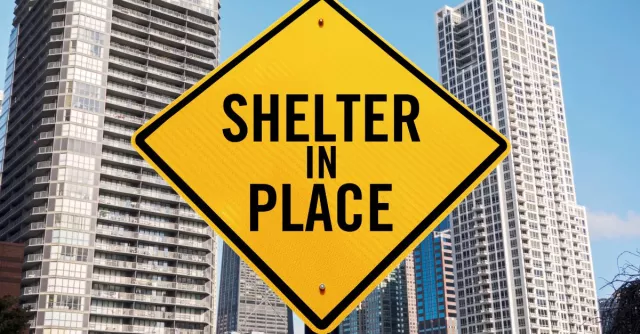Being Prepared: How to Shelter in Place at Work

This article covers the definition of a commonly confused term "shelter in place" and how to respond to this situation.
What Does Shelter in Place Actually Mean?
In certain emergency situations, including a severe weather alert, a pandemic, an environmental hazard (e.g., chemical release), or a local emergency (e.g., active shooter), the public is told to “shelter in place.”
The purpose of sheltering in place is to keep people safe while indoors during an emergency event. However, the phrase may be confusing to someone who is not well-versed in disaster preparedness, interpreting the instruction as staying where you currently are. That’s precisely the opposite of what you need to do.
Steps
Different threats require slightly different sheltering recommendations.
The following steps describe how to effectively shelter in place in your office or at home and ensure everyone's safety during a crisis.
- If your office has visitors, make sure they stay in your building and are instructed on shelter-in-place protocols.
- Gather everyone in the designated shelter-in-place area, secured and with locks on the doors.
- In a natural disaster or radiological release, the safest location is the room on the lowest level, or underground, and in the interior-most part of the building.
- In the event of a chemical or biological disaster, the area should be an interior, windowless room on the highest floor of the building. Most hazardous agents are heavy enough to slowly settle to the ground.
- In the situation of a pandemic, you’ll want to remain at home and only leave for essential items (food, supplies). If you do find yourself in a busy area, you’ll want to practice social distancing to give yourself the best chance of not becoming infected.
- If your office is in a mobile unit, a plan must be developed in advance specifying a nearby building to seek shelter in. Strong winds can turn a trailer or a mobile unit over, making it unsafe during many types of disasters.
- Shut off all HVAC systems and fans. If there is no other room other than the one with windows, cover or block them.
- Encourage everyone to contact their emergency contact and inform them of their location.
- Have an essential emergency kit accessible.
In any emergency situation, immediate and clear communication can provide a lifeline. Consider our Crisis Communication checklist as a part of your strategy.
Additional safety measures
Shelter-in-place can be in response to a pandemic (ex: COVID-19). To learn more about preparing for a pandemic, download our Pandemic Tabletop Exercise.
And to learn more about preparing for an active shooter, download our Active Shooter Tabletop Exercise.


